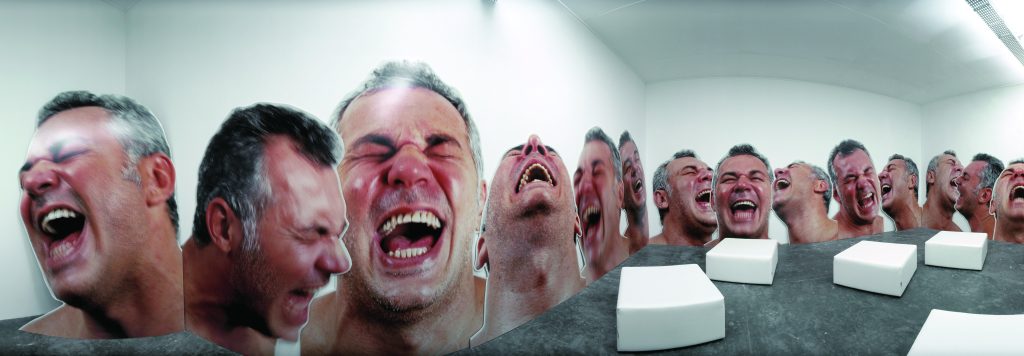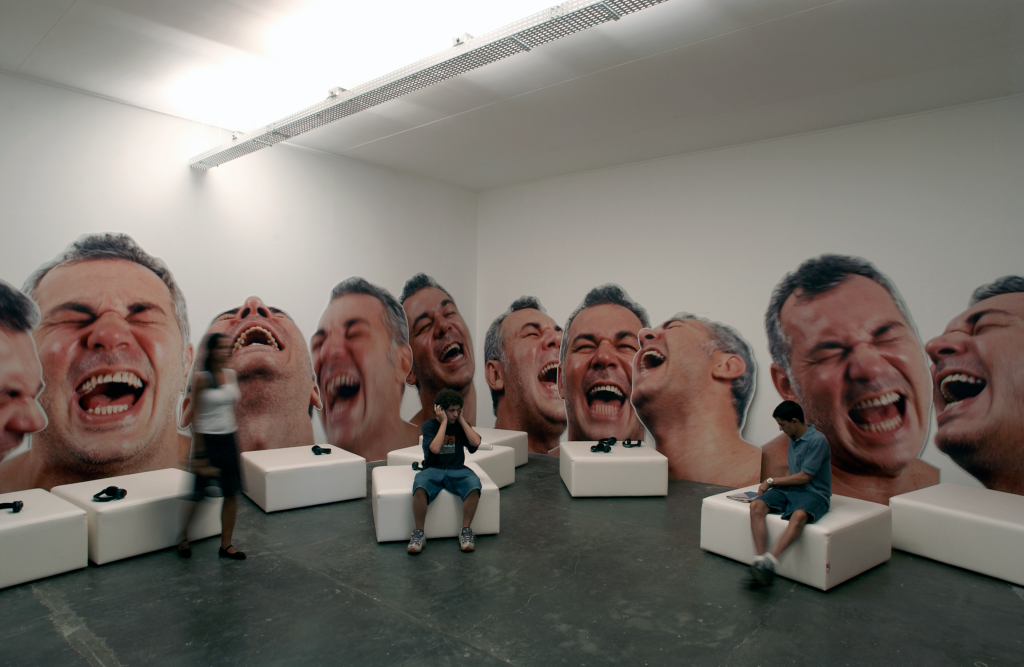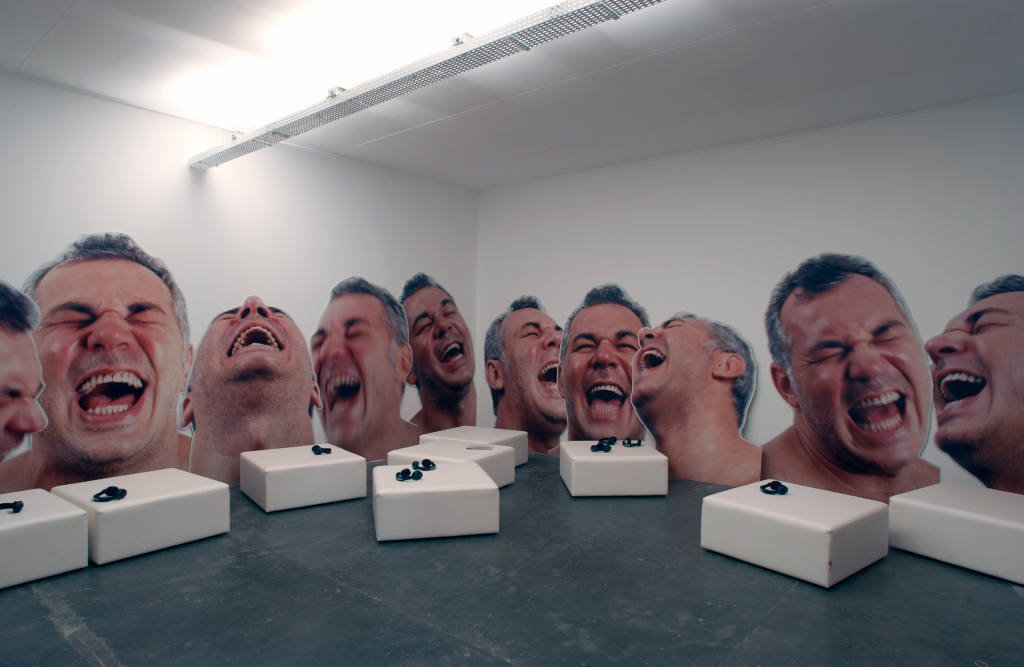

Dying of Laughter


When the eye smiles or vice-versa
“Excess of sorrow laughs. Excess of joy weeps”. William Blake
This work, intended for the Biennial, will be nothing short of surprising not only for those who are well-acquainted with Marcos Chaves’s work but also for the ones who don’t know much about his previous output, which has always been built upon appropriation and intervention parameters. The surprising factor is that the well-known humorous tone in his works used as a synonym for language is present here not only as an element but as a fundament, as an aesthetic statement. Something which is quite opportune in view of the seriousness that pervades most of recent contemporary art production – conceptual sacraments that at times may even cause hindrance of the air flow – making this a pertinent work, more than ever.
Morrendo de rir (Dying of laughter) is a borderline work, and it couldn’t possibly have been otherwise, not only due to its mixed nature and to the creation of a hybrid space but also for the un-delimitated semantics of the images – pain, outcry, joy? Marcos Chaves did listen to this intrinsic paradox of smile, whose extreme is laughter, so ‘essentially human’ and ‘essentially contradictory’ according to Baudelaire, in order to produce a true collage-installation in which the work component parts overlap, being linked as layers, driven to their extremes: silence, image, space and smile.
If one of the recognizable dreams in the installations is their proximity to life and to human condition issues, here the two parts of this work fuse into a third one which is the public, as if the ‘ground wire’. In fact, the balance/diapason of this visual-sound or, depending on the order in which it is activated by the visitor, sound-visual installation lies upon the triangle: images of the artist – laughter – visitors. Owing to this structure, the visitors are converted into spiritual mediums, for they are the ones who will be channeling the visual and the sound laughter, possibly adding their own contribution. The spectators are the ones who activate the work – its sequence. A sequence that, moreover, never stands still, not only for the movement of the mouth-laughter image but also for the sound that collaborates as movement: the image is like a soundtrack and the sound comes through as image.
Art’s official silence may be disrupted by the work at the very moment when people laughing do transgress their sound space; even narration itself is continuous for this is not a static work (as the photos objectified here might imply): it is re-done with each visitor that comes by, with each new smile or laughter, a perpetual motion in which one can discover a heterodox, minimal component that is alive, for though the motif may repeat itself, the form will hardly do this – at times effect and cause might get altered within it. Thus, if half of the work is in the hands of the viewer, this is because it is the viewer who will utter the last word or better, the last laughter, as the work contains this bold wish of being an open-ended essay.
Morrendo de rir is part of Marcos Chaves’s artistic vocabulary whose major figure is irony towards art, the art space and the artist himself. And there they are, the plays upon forms that might be inferred from smile and laughter as being precisely the opposite of the square shape of the room and of the poufs, or the stacked-up images of the artist’s face as the chief instance regarding the equation of the tension field within a work that is akin to such a bent in acoustic art but that, above all, brings some of our aesthetic credits into a stall, due to the ironical junction of the eye and the ear upon a title that accomplishes what it promises.
XXV International Biennial of São Paulo
Adolfo Montejo Navas
Rio de Janeiro, march 2002



